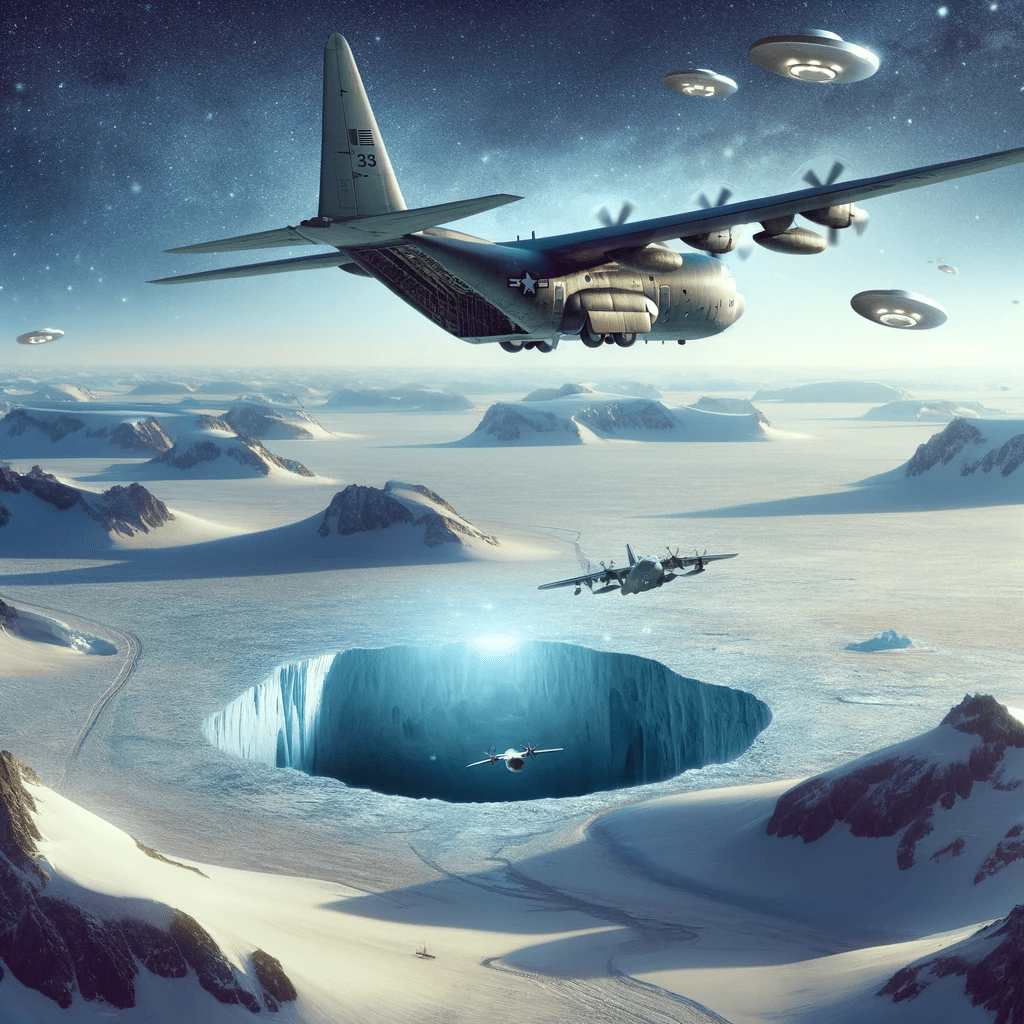Interview of Antarctica Naval Officer – Linda Moulton Howe

Linda Moulton Howe, a renowned investigative journalist, conducted a fascinating interview with Brian S, a former Navy officer, about his experiences in Antarctica. Brian, now 61 years old, recounted his time there between 1984/85 to 1987, where he and his C130 crew encountered unexplained phenomena, including sightings of silver discs in the sky. Brian also mentioned witnessing an entrance to a base believed to be a collaboration between humans and extraterrestrial beings. Brian reported that his superiors instructed him and his crew to deny having seen these anomalies.
This interview was a part of the Phenomenon Radio show, a concept that brings together high-profile experiencers and investigative journalists to explore the UAP/UFO phenomenon. Linda Moulton Howe’s work in this field is extensive, focusing on uncovering truths through first-hand accounts and investigative insights.
In her interview with Brian, a former Navy officer, Linda Moulton Howe explored his encounter with a mysterious opening in the Antarctic ice. Brian described this opening as remarkably large, comparable in size to a football field, suggesting it was expansive enough to allow a C-130 aircraft, with its wingspan of approximately 130-138 feet, to pass through. This significant size underscored the unusual nature of the hole. Located in the remote and lesser-known area of Antarctica, about 5 to 10 miles from the geographic South Pole, the hole presented both an intriguing and isolated feature. Its appearance was particularly striking – a vast opening that seemed to descend into the ice, with the interplay of sunlight hinting at a ramp-like formation, more akin to a deliberate entryway than a simple crevice. Adding to the mystery, the area was designated as a no-fly zone, purportedly for air sampling, which only heightened the intrigue surrounding the hole. Brian also observed lines resembling vehicle tracks leading to the opening, indicating regular, though unclear, activity.
The geographic South Pole, which is located in Antarctica, sits on a massive ice sheet that is incredibly thick. Estimates indicate that the ice at the South Pole is approximately 2,700 to 3,000 meters (about 9,000 to 10,000 feet) thick. This immense thickness of ice is a result of thousands of years of accumulated snowfall that has compacted into ice. The Antarctic ice sheet itself is the largest single mass of ice on Earth, containing a significant portion of the planet’s fresh water. The depth and extent of this ice sheet make Antarctica a unique and crucial part of the Earth’s climate and ecosystem.
Assuming that the ‘air sampling station’ within the no fly zone as mentioned by Brian “S” is located 5 to 10 miles from the geographic South Pole, it would be quite close to the South Pole Atmospheric Research Observatory (ARO). The ARO is part of the Amundsen-Scott South Pole Station, a United States scientific research station at the South Pole, which has been continuously occupied since November 1956.
The ARO, specifically, plays a significant role in atmospheric research. It is known for collecting valuable data, including the South Pole CO2 record, which is a part of the NOAA’s (National Oceanic and Atmospheric Administration) continuous record. This data collection began during the first winter-over year of 1957 and has been crucial in understanding atmospheric changes, particularly in relation to global climate change.
Given the proximity of 5 to 10 miles, the air sampling station would be relatively close to the ARO. This proximity would place it within the area of the Amundsen-Scott South Pole Station, suggesting that any activities at this air sampling station, especially if related to atmospheric research, would likely be known to or coordinated with the personnel at the South Pole Station.
Brian anticipated seeing a standard air sampling station in a no-fly zone but instead came across a massive opening in the ice, about 5 to 10 miles from the Pole. This vast hole, observed during a flight mission, was unlike anything typical of an air sampling facility.
According to Brian, there was chatter among the crew about the possibility that this opening could be an entrance to a base, potentially indicating cooperation between human and extraterrestrial entities. The unusual size of the hole, combined with the no-fly zone status and distinct tracks leading to it, hinted at more than mundane scientific activity, fueling speculation about its true nature.
The story of Admiral Richard E. Byrd’s 1947 expedition, as detailed, shares intriguing parallels with Brian’s account. Both narratives involve unusual and unexplained phenomena in Antarctica. Byrd’s expedition, known as Operation Highjump, reportedly encountered strange objects and phenomena, including UFO sightings and an underground base, much like the mysterious hole and potential base mentioned by Brian.
The film “Aliens and the Third Reich” (2010), looked into theories about Nazi Germany’s secret bases in remote locations, including Antarctica. This narrative aligns intriguingly with Brian’s account of unexplained phenomena in Antarctica. The film highlights reports of strange activities on the continent, such as mysterious aerial objects and odd signals, paralleling Brian’s observation of a large, anomalous hole in the ice, potentially suggesting a covert base.
The Ice Cube Neutrino Detector, positioned beneath the Antarctic ice at the South Pole, is designed for observing high-energy neutrinos from cosmic events. It’s composed of numerous sensors within a cubic kilometer of ice, capturing Cherenkov radiation when neutrinos interact with the ice. This advanced technology, with its diverse applications, adds complexity to the mysterious Antarctic region. It resonates with Brian’s account of an anomalous structure in Antarctica, hinting at the presence of advanced technologies and secretive activities in the area.
Brian’s account adds to the growing body of evidence and witness testimonies that suggest there’s more to our understanding of the world than what is currently accepted. His story, as presented by Linda Moulton Howe, offers a tantalizing glimpse into the possibilities that lie in the unexplored and unexplained corners of our planet.


